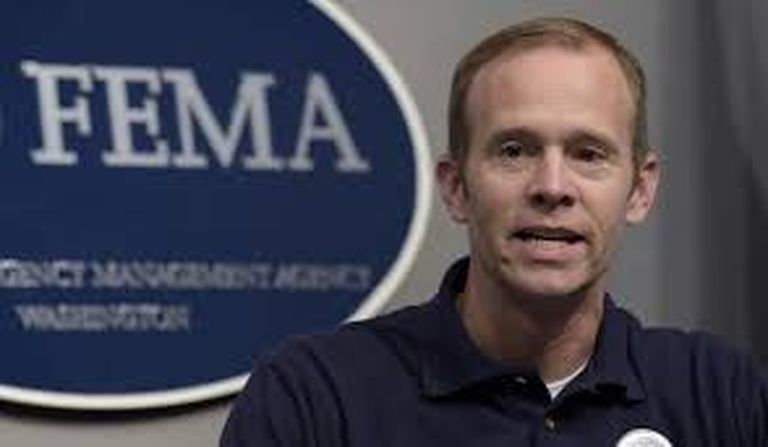Hurricane Florence has triggered more than 976,000 power outages across North Carolina, South Carolina and Virginia as of 9:40 a.m. eastern on Saturday, September 15, and that figure may growth to one million to three million outages by the time the storm subsides, officials predict.
North Carolina Power Outages: There are more than 807,000 outages in North Carolina as of 9:40 a.m. ET on Saturday, Sept 15. For North Carolina, that's up from:
- 765,000 outages as of 11:20 p.m. ET on Friday, Sept 14.
- 551,000 outages as of 11:45 a.m. ET on Friday, Sept 14.
- 403,000 outages as of 7:30 a.m. ET on Friday, Sept 14.
- 157,000 outages as of 11:00 p.m ET on Thursday, Sept 13.
- 132,000 outages as of 10:15 p.m ET on Thursday, Sept 13.
- 91,000 as of 8:00 p.m. ET on Thursday, September 13.
South Carolina and Virginia Power Outages: Additional outages have also surfaced in South Carolina (164,000) and Virginia (5,100), according to the Data Fusion Solutions' power outage tracking tool.
Hurricane Florence: More Power Outages Coming
The outage figures will likely rise significantly over the next 24 to 48 hours, especially as Florence dumps one to three feet of rain on the region.
Among the power-related updates we're tracking:
- As of Thursday, Sept. 13,, almost two-thirds of the reported outages originated in Carteret County, along the coast about 100 miles (161 kilometers) northeast of Wilmington, North Carolina. There were also several thousand outages each in Craven, Pamlico and Onslow counties. Source: Associated Press.
- Duke Energy estimates anywhere from one million to three million customers could lose power as a result of Florence and its aftermath. Source: Charlotte Business Journal.
- Florence will rival or exceed the destructive power of Hurricane Matthew, which put more than 1.4 million customers out of service after making landfall on Oct. 8, 2016 near McClellanville, South Carolina. Source: Charlotte Business Journal.
Plenty of Warning Signs
Earlier this week, FEMA (Federal Emergency Management Agency) Administrator William "Brock" Long (pictured above and below) predicted residents could be displaced from their homes and lack power "for weeks," according to The Washington Post.

The warning triggers ominous memories of Hurricanes Harvey and Irma, which flooded Houston and slammed portions of Florida in 2017, respectively.
Harvey caused more than 300,000 power outages across Texas in August 2017. Half of the outages were fixed within a few days of the storm, but many remote areas were dark for far longer. Cell service also was cut off in many areas for extended periods.
Hurricane Florence resembles Harvey in at least one troubling way: Much like the Houston storm's slow movement, Florence is threatening to "park" itself over portions of North Carolina and perhaps Virginia -- potentially dumping more than a foot of water (or far more) in certain areas. Runoff from flooded rivers and potential mudslides also are potential concerns.
Hurricane Florence: MSPs, CSPs Brace for Impact
IT service providers of all sizes spent this past week bracing for Florence. Small business MSPs across the forecasted storm track activated their internal business continuity plans on Monday and Tuesday of this week, and alerted customers about various data protection and IT safeguards.
Also, big data center providers and public cloud companies across the Carolinas and Virginia -- everyone from Amazon Web Services (AWS) to Google Cloud Platform (GCP), Microsoft Azure and IBM Cloud -- topped off their backup diesel generators, and put fuel suppliers on alert to overcome potential power outages.
Hurricane Florence: Small Business Financing, Recovery Services
Once the storm subsides, it's a safe bet federal government and financial organizations will promote special programs to help businesses across the region to re-open their doors for customers.
In the case of Hurricane Irma, the U.S. Small Business Administration delivered a disaster declaration across numerous Florida counties -- allowing entrepreneurs to tap into financial resources during the recovery. At the time, Florida Governor Rick Scott activated a Florida Small Business Emergency Bridge Loan Program to help companies ease cash flow challenges, make repairs or simply get back on their feet after Hurricane Irma’s fallout.
Similarly, VISA has promoted a range of post-storm initiates to help small businesses get back on their feet following various disasters.
MSPs: Thriving After a Storm?

While some MSPs may worry cash flow and customer health after a hurricane, recent benchmarking data from Service Leadership Inc. suggests MSPs and IT service providers actually thrived amid post-Harvey recovery efforts in Houston.
The likely reason: Customers are willing to pay a premium to get back up and running quickly, and they're also more interested in ongoing data protection services after a major storm, according to Service Leadership CEO Paul Dippell.
Depending on Hurricane Florence's impact, ChannelE2E will be watching for similar recovery programs to surface in areas affected by the storm.




